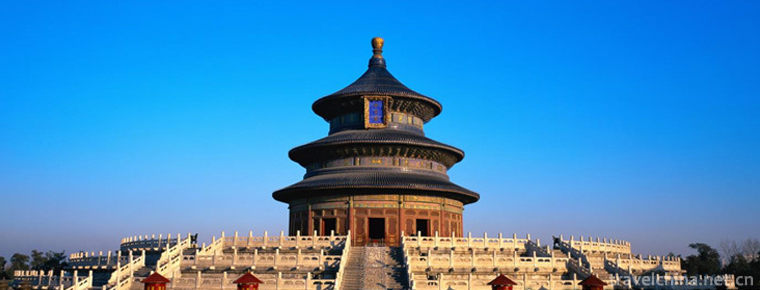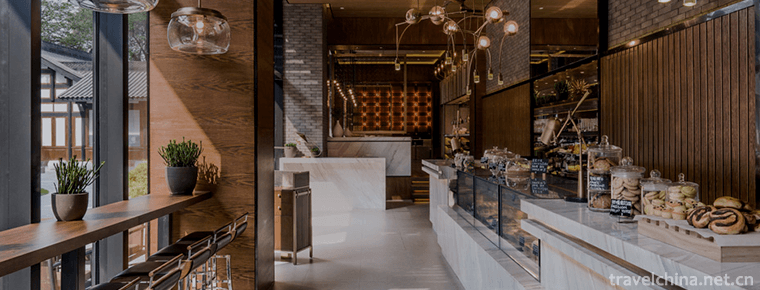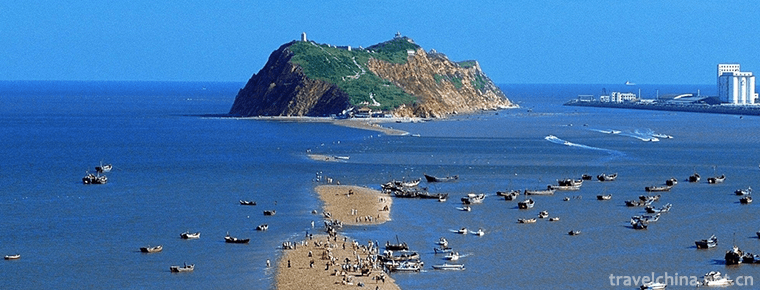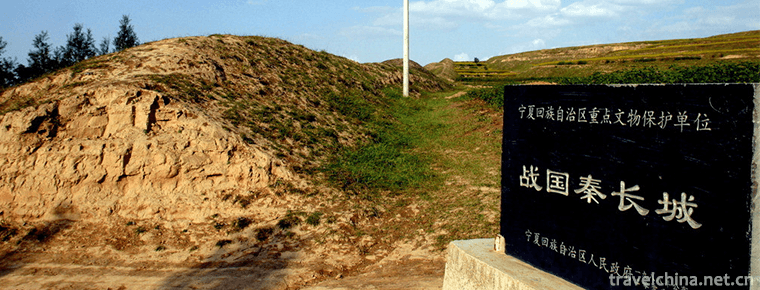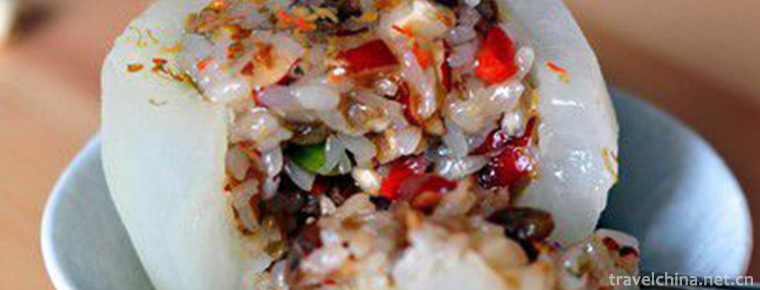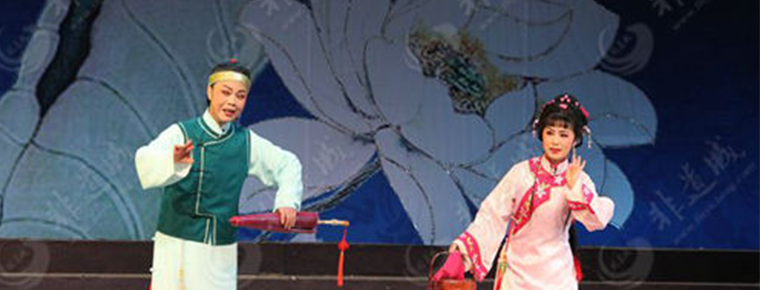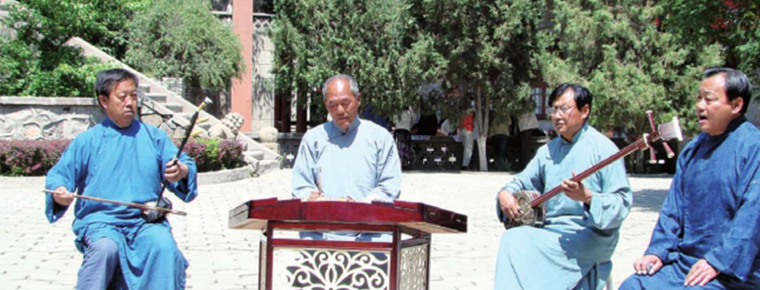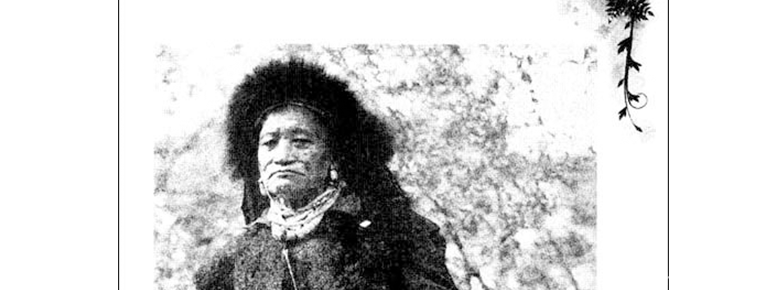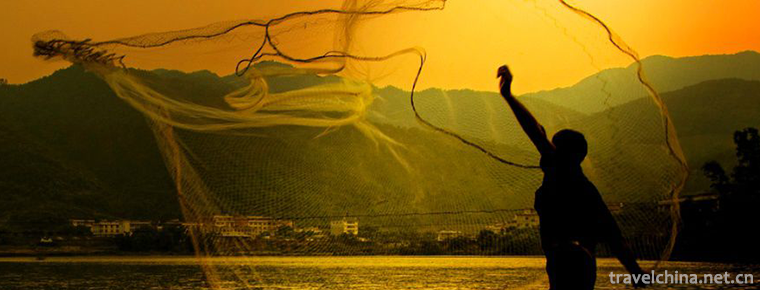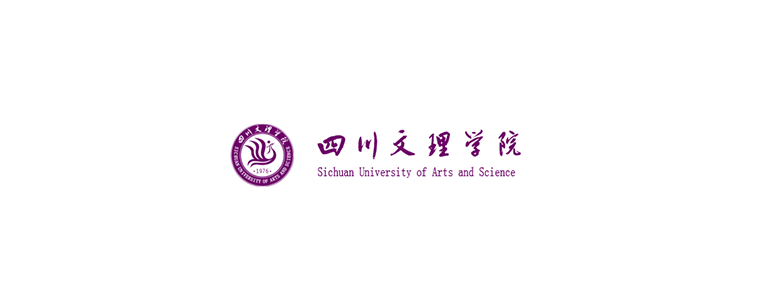Hunan Opera
Hunan Opera
Hunan Opera, is one of the traditional operas in Hunan Province. It is popular in Changsha and Xiangtan, mainly in the twelve genera of Changsha Mansion, namely Changsha, Shanhua, Xiangyin, Liling, Xiangtan, Xiangxiang, Ningxiang, Yiyang, Youxian, Anhua and Chaling, 17 counties and cities in the eastern part of southern Hunan , Xiushui in the north, Xiushui in the south, Ji'an in the south, Pingshi, Qimen, and Chaling in Guangdong. Lechang, Guitou, Lishi, Shaoguan and other places. At that time, the folk used to be called the "Grand Theatre Group", "Changsha Group" or "Xiangtan Group", was once called "Changsha Hunan Opera".
Hunan Opera originated from Yiyang Opera in Ming Dynasty, and then absorbed Kun Opera and Pihuang Opera, forming a multi-tone opera including high-tone, low-brand, Kun Opera and random bullet. The repertoire is mainly composed of high-pitched tunes and random balls. It combines with folk art and local language skillfully. It is rich in Hunan folk local characteristics, such as Pipa Ji, White Rabbit Ji, Moonworship Ji and so on. In May 2006, it was listed in the first batch of provincial intangible cultural heritage lists, and in June 2008, it was listed in the second batch of national intangible cultural heritage lists.
Tracing to the source
The name of "Hunan Opera" was first found in the first episode of Hunan Opera Textual Research published in Changsha in the ninth year of the Republic of China (1920 A.D.).
During Chenghua period of Ming Dynasty, Changsha was the seat of Jiwangfu. The development of politics and economy has promoted the prosperity of opera performance. In the long-term performance activities, foreign operas have been closely combined with the local traditional folk arts and local languages, gradually forming four major tunes, including "Gao" (Gao Qiang), "Low" (Low Brand), "Kun" (Kunqu Opera), "Chao" (Random Play), which sing in white with Zhongzhou rhyme and have local characteristics.
Gaoqiang originated from Yiyang Tune. Xu Wei's Narrative of Southern Ci in Jiajing (1522-1566) of the Ming Dynasty had already recorded that Yiyang Tune was widely used in Beijing, Hunan, Fujian and Fujian. After passing on to Changsha, Yiyang tune was transformed into a high tune of Hunan Opera on the basis of rolling singing of Yiyang tune through local music such as "misuse of local language", "only along local customs" and integration of Gong tune. Judging from the co-performance of high-pitched and Low-brand Liantai operas such as Chun Zhong Zhuan, the latter came into being at about the same time as the former.
Kunqu Opera was introduced to Changsha a little later. According to the "Changsha Laolang Temple Ban Pai", the Changsha Fu Xiu Ban and Lao Ren He Ban, which sang both Kunqu Opera and Gaoqiang Opera, were established in the three years (1664) and six years of Kangxi in the Qing Dynasty. Volume 3 of Jiang Binggu's "Xiaoxiang Listening to Rain Records" from 1755 to 28 years of Qianlong Dynasty recorded that when Yang Tingzhang, Hunan's envoy of political affairs, met with him, he performed Kunqu opera "More than Three". This period should be the time when Kunqu Opera was introduced into Changsha. The performance of Gao and Kun on the same stage has a direct impact on the development of high-pitched music and performing arts. It has changed from a major Gong and drum martial arts drama to a small gong and drum-singing literary drama. At that time, Lao Renhe and Ban Xiaosheng Xibao and Du Sansan sang such high-pitched operas as "Chai Zhai Porridge" and "Hunting Huishu", which also absorbed many exquisite workmanship and dances from Kunqu opera performances. At that time, they were also famous for their time. During Tongzhi and Guangxu years (1862-1908), Kunqu Opera gradually declined and withdrew from the stage of Hunan Opera. In the 31st year of Guangxu, Ye Dehui, a Changsha native, wrote the sentence "Kunshan is near and nobody knows how to find the source of Bai Shiweng" in his Poems of Watching Opera in Hehuamen, which illustrates the situation of Kunqu Opera in Hunan Opera at that time.
Bombs are also called "North-South Road". There is no definite way to come, but Hunan Opera has absorbed such dramas as Dachangshengle and Chicken Stealing from Hui Ban and called their tunes "Anqing Tune". Others belong to Anqing "Huabu" such as "Watered Seven Armies", "Dragon and Tiger Fighting", "Lu Yao Zhima Li", "Wang Xiangxiao", "Li Dadadageng" and "Puzzled Cao Fu". 》 They are also the repertoires often performed in Hunan Opera.
Huiban originated from "Ruyi hook" and "Lock Cloud Sag" in Qin Opera, and later spread to Hunan Opera Group. In addition, Hunan Opera also absorbs such dramas as Yang Yong, a Drug Drinker from Han Opera. It can be seen that the early origin of Hunan Opera has a certain relationship with Hui Opera and Han Opera. With the introduction of the Southern and Southern Road tunes, high and disorderly performances began to appear on the stage of Hunan Opera, such as the disc box in Jin Wan Ji singing high tunes and the torture bandits singing chaotic tunes. Because high and chaotic are on the same stage, they can learn from each other and promote each other: high-pitched tunes absorb the work and martial arts of chaotic bullets; chaotic bullets are influenced by high-pitched roll singing and develop long-term running water, such as 48 "no more" in "Chop Li Guang" and 24 "poor masters" in "Cheng Ji Catching a Car", which make Hunan Province. The opera's singing and performing arts have taken another step forward. By the twenty-seventh year of Guangxu (1901), Peking Opera had flowed into Changsha. Four years later, eighteen Beijing opera artists joined the Hunan Opera Class in Changsha and performed on the same stage. Hunan opera artists learned more difficult martial arts from Beijing Opera and absorbed some of the colorful tunes of Beijing Opera in their singing.
In summary, Hunan Opera originated in the Ming Dynasty, and gradually formed into a multi-tone opera in the middle of the Qing Dynasty. After changes, it formed a high-tone opera with random bullets as its main voice. During the reign of Kangxi, most of the class clubs mainly sang high-pitched songs, or both high-pitched and Kun-pitched songs, such as Fu Xiu Ban, Lao Ren He Ban. During the reign of Qianlong, the number of class societies gradually increased. For example, the Dapuqing class, which mainly sang Kunqu opera, appeared in Liuyang and Liling areas as a "case hall class" composed of nine people (see "Customs" in Liling County Chronicle of Qianlong). At that time. Laolang Temple has been built in Changsha and Xiangtan, and Jiulinke class was set up in the late Qianlong period.
During the Daoguang Period, Renhe Class was established, which was mainly composed of random bombs. During Tongzhi and Guangxu years, class clubs flourished. By the first year of Xuantong (1909), there were five classes in Changsha City, Renhe, Qinghua, Chuntai, Renshou, Tongchun, Yonghe, Qinghe, Liuyang, Qingsheng, Ningxiang, Yiyang, Daguan and Fulin. By the eve of the founding of the People's Republic of China, there were 21 Hunan opera clubs. More than 1,200 people. Since the Daoguang period and before the founding of the People's Republic of China, there have been twenty-eight Kobans and more than sixty years of opening, which are distributed in Changsha, Xiangtan, Liyang, Liling, Chaling and other places. Among them, the Wuyun class, which started in the late Daoguang period, has the longest history and has trained more than 400 artists for decades. Afterwards, there were three more influential classes, such as Yuanyuan and Huaxing.
The Kun classes of Fu Lu, Jiu Ru and Fu Xi established after 1920 are organizations specializing in the training of female artists, and have been open for more than ten years. During the Tongzhi and Guangxu periods of the Qing Dynasty, Hunan Opera had more than 1000 plays with rich contents: there were plays from Northern Zaju, such as Shandao Hui, Xuxiong Hu, Hui Zhilu, etc; there were plays from early Yiyang Opera, such as Mulian Zhuan; there were plays from Yiyang Opera and Qingyang Opera, such as Pipa Ji and Bai Yang Opera. Rabbit Records, Golden Seal, etc. There are also a large number of North-South Road dramas such as Three Kingdoms, Water Margin, Yang Jia Jiang and Thirty-six Press Courtyard. After the change of performance practice, there are 682 traditional repertoires, including more than 500 ballistic repertoires, nearly 100 high-tune repertoires and more than 200 folds of Low-brand repertoires preserved in Liantai large-scale operas, but there are few independent ones, and few Kunqu operas and minor repertoires of miscellaneous operas.
Sound chamber
The performance of Hunan Opera combines high, low, Kun and chaotic tunes in one furnace, and absorbs Qingyang tune, Siping tune, blowing tune and so on.
Miscellaneous tunes such as Nanluo Opera, Yinnusi, Flower Tune, etc. In the long process of evolution, high-pitched tunes and random bullets have become the main voices in the art of Hunan Opera.
Gaoqiang is one of the main tunes of Hunan Opera, which originates from Yiyang Tune in Jiangxi Province. After entering Hunan, it quickly absorbed the traditional folk music of central and Eastern Hunan and took root. It became a high-pitched opera in the early stage of Hunan Opera. Its representative repertoire was Mulian Zhuan. Gaoqiang has always been accompanying gongs and drums, not trustee strings, one person opens his mouth, and all the people help to sing. It is a simple and honest and unrestrained combination in the high-tune system, and its structure inherits the system of northern and southern divertimento. In a twist play, a suit is composed of three parts: introduction, passage (including main melody and anthem) and ending. It is customarily called "one hall brand".
Gaoqiang Qupai has more than 300 cards, which are divided into North and south, and Nanqu is more than Beiqu. Each piece of music card is generally composed of "cavity" and "flow" (release). All phrases with large sentences, strong melody, using human voice and percussion cymbals as the end are called "tunes"; while words with more sounds and less recitation are strong, only the "roll singing" of drums and slabs is called "flow". That is to say, adding words and phrases in front of the tune to become a long running board can enrich the content of the tune and express thoughts and feelings incisively and vividly. According to the change of mode and melody, the functions of Qupai are different. Apparent narration and joy, and warm atmosphere included , , [Mountain flower seeds], , and so on; apparently generous, exciting, pessimistic and glorious emotions included [North Horse Station], , , , [goat hillside]]] .To show great momentum and prestige. Wuxiong magnificent scenes include , [cotton padding], , , , etc., reflecting meditation and nostalgia, sadness and sadness, , [Xiashan tiger], , . There is also a kind of tunes and sentences of different music cards that "wear" and "hang" each other, alternating and exchanging each other in the elevation and mode, and combining them into eight Ganzhou songs, , , , , which can adapt to the changes of plots and characters'emotions in the play and has strong expressive force. 。 In addition, there are also some folk songs and minor music cards such as "tree cover" and "embroidery stop needle".
The rhythm of high chamber can be divided into two types: one is regular rhythm type, the other is loose slab type with more free rhythm. The slab style is customarily called veneer, splint, loose board, rolling board, fast and slow singing, Huilong and so on. Most of the lyrics are long and short sentences with cards, but the Chinese tune is a neat seven-character sentence. After the founding of the People's Republic of China, Hunan opera musicians, in order to adapt themselves to the performance of modern life, wrote a number of new songs by means of "wearing, hanging, roping and committing crimes". For example, the large-scale aria of "striving for glory for the proletariat" in "Song of the Gardener" was composed of "listening to the proletariat in Bei Zhuma", "red cocoon", "mixed Jianglong" and "Xinshui". Ling, a kind of music cards "wear" and "hang", not only retains the characteristics of the traditional voice, but also has a distinct flavor of the times. Nowadays, orchestral accompaniment has been used in singing high tune, which combines vocal accompaniment with instrumental accompaniment.
Random bullet, also known as "ballistic cavity" and "North-South Road", belongs to the pihuang system of plate cavity music. South Road corresponds to Erhuang Road and North Road corresponds to Xipi Road, and each has its own reversal, called Anti-South Road and Anti-North Road, which corresponds to Anti-Erhuang Road and Anti-Xipi Road. Flat plate (i.e. four-level tune), Anqing tune (i.e. blowing cavity) and seven-and-a-half hammer (i.e. Nanluo cavity) are all attributed to random ballistic cavity. The main difference between the two tunes is that they have different basic modes of rotation and form different chords. There are slow three eyes (also known as "Ten Bantou", "Four Jades"), slow slow slow-moving, slow-moving, fast-moving, fast-moving, slow-singing, scattering board, rolling board and guide board, crying head and joint bullet in the slab-style South Road of random bullets: there are adagio, fast three eyes (equivalent to the original board of Beijing Opera), second-rate (equivalent to the 26 of Beijing Opera), stack, fast-playing and slow-singing in the North road. Scattered plate, rolling plate, guide plate, crying head and joint bomb, etc. In addition, through the creation and development of South to north, positive to negative, South Road stack, 18 boards, pagoda songs and other unique forms. In terms of rhythm and mood, South Road is smooth and euphemistic, slow; North Road is cheerful and lively, fast; South Road is sad and angry. The lyrics are basically neat seven-character or cross sentences, the upper and lower phrases are repeated, and there is a small pause in the phrases, often padded with a small door. Generally, the upper and lower phrases are not scarce, but in special cases, it can also be omitted a final sentence, replaced by gongs and drums, commonly known as "foreskin".
Low brand is also a kind of synthesized aria. The form of the melody is three-part body, that is, there is a "lead" at the beginning, which is loose and the speed is the slowest; the main body is three-eyed board and one-eyed board or no-eyed fast board, and the speed is stable; the final melody turns sharply downward, besides accompanying with orchestral music, adding gongs and drums, resulting in the end of the climax, which is called "conjunction". But there are also those who are not trisegmental, or have no primers, or have no conjunction, or have only the main body. Qupai also has more than 300 brands, which are divided into three categories: low brand, fan brand and passing brand. Low brand is generally used; Fan brand is dedicated to the singing of Fan Bang characters; the passing brands are mostly wordless music cards, such as sending troops , Shang Dynasty , drinking and banqueting [good garden], etc. When it comes to the low brand, Kunqu Opera is commonly known after the localization of Kunqu Opera. The Lyric Form and Qu Ge are the same as Kunqu Opera, and the names of Qu Pai are mostly the same, but the singing methods are much the same, which is rougher and straighter than Kunqu Opera.
Kun Opera was introduced in the late Ming and early Qing Dynasty. Lao Renhe Class, founded in the sixth year of Kangxi reign of Qing Dynasty (2667), sang for Gao Kun. During the reign of Qianlong, there was a big Puqing class specializing in Kun Opera. Frequent performances include "Tour Garden Dreams", "Tibetan Boat Stirred Beam", "Sword Pavilion Wenling", "Gong E Stirred Tiger" and so on. Later, because of the prosperity of Ran Tan (South and North Road), Kun Opera gradually declined during Tongzhi and Guangxu years. Today, there are no Kun Opera repertoires in Hunan Opera.
Tricks
The performing art of Hunan Opera, the early stage of high-pitched Liantai opera, emphasis on performance and special skills. And the combination of "hundred operas", "acrobatics" and "martial arts" equals one of them, such as "Mulian" opera pays attention to the skills of "shooting forks", "folding arhats" and "climbing poles". After the Qingyang Opera entered, it changed from a major Gong and drum play to a small gong and drum play, featuring that singing is more important than doing, strong work and life atmosphere, and few stylized movements, such as the performance art of Pipa Ji and Golden Seal, which still retains a solemn and simple style. After the Kun Opera entered, the performing arts have developed, absorbing the characteristics of Kun Opera in singing and dancing, paying equal attention to both singing and doing, and the stage performances are lively and varied, such as White Rabbit Story o Hunting Book, Broken Kiln Story, Chai Zhai Porridge. It is said that this is the creation of Lao Ren and Ban Xiaosheng Du Sanhe and Xibao. Up to now, it still has great artistic charm. 。
Since Tanqiang (North-South Road) entered Hunan Opera, its performance program has been strengthened. A number of plays such as Pound the Capture of Water, Wutai Hui Brothers, which are famous for their shapes and meritorious performances, have added the industry of purple face. The purple face begins with Guo Shaoren of Renhe Ban. At the same time, because of the high and the same stage, the high-pitched tune absorbs the work and martial arts of the tune, and the tune is influenced by the high-pitched roll singing. It develops into a flowing stage, such as the forty-eight "no more" in Chop Li Guang, the twenty-four "poor masters" in Cheng Ji Catching a Car, and the "pagoda song" in Golden Beach. At the end of the Qing Dynasty, after Peking Opera entered Changsha, eighteen Peking Opera artists participated in the performance of Hunan Opera troupe. Hunan Opera artists learned martial arts from Peking Opera artists and absorbed some of Peking Opera's colorful tunes in their performances, which enriched the performance art of Hunan Opera once again.
Hunan opera characters have four lines of life, Dan, Jing and Ugly, each of which has its own branches and unique skills. Raw horns rank first in all walks of life. Living in Luo Hat, Wen Jin, Pheasant Tail, Helmets are all available, there are four styles: poor, literary, rich and martial arts. Singing in a fake voice, pronouncing the original sound, not mixed with local language, especially re-work. For example, Lv Mengzheng in Poor Children's Drama (commonly known as "Rotten Cloth Drama"), Su Qin in Golden Seal, Chen Daguan in Da Nephew's Tomb, etc., performed relaxedly and freely, with a lively atmosphere. For example, in the book of Hunting and Return, Washeng, a high-pitched dancer with a bright eyebrow, swinging feathers, raising legs excessively, swirling like a wind, has a slightly childish grace, which naturally and vividly shows the naive and lively character of a young general of fifteen or six years old. This high-pitched performing art, closely combined with dance, was handed down from Xiaosheng Du San. Later, Li Zhiyun of Wuyun Ban and Wu Shaozhi of Huaxing Ban were well-known for it.
After the founding of the People's Republic of China, Chen Jianxia inherited this traditional performing art and won an award at the first National Opera Performance Conference. Wuyun Ban Liu Jiewu's slippers walking in the "Wind-worship Platform", Renshou Ban Chen Shaoyi's independent boat route in "Golden Beach", and Puqing Bansheng Chuying's drunken road pacing in "Golden Horse Gate" are all artistic creations with rich characteristics. The singer of Guiyun in Tsinghua Banyan was once called "the sky in the south" with the voice of "clouds cover the moon". After the founding of the People's Republic of China, Xu Shaoqing developed the singing style of the veterans of Hunan Opera. When he played Zhang Guangcai in "Pipa on the Road", he rolled dozens of lines at one go, with his walkthrough like running mountains and rivers, clamping down the clouds. He won the prize at the first National Opera Performance Conference.
The traditional performing arts of Hunan Opera are rich in formulas and can break through them. They have roles to branch and are not restricted by their professions. Instead, they create artistic images of different characters from the point of view of life. For example, "Dayan Huiyao", originally a singing opera for Zhengdan, has been integrated into Wudan's work. It vividly shows Liu Yingchun, a wealthy young lady, who has lived in a cold kiln for ten years. "Crying ancestor temple" was originally a play of Laosheng, but it was played by Xiaosheng instead, which made Liu Jian more in line with the historical reality. Qutong in "Pretend to Crazy Tipping Pot" was originally an old drama, but he changed to pure role to enrich the character by realistic work. Sima Yi in "Empty City Plan" was originally a pure dress, but instead relied on raw horns to achieve the artistic effect of paying equal attention to singing and conceiving. Lu Yao in Bapaizhuang and Biao Dawei in Beiwa Jinfu have sharp, rough, straightforward and unrestrained images.
Inherit
After the outbreak of the War of Resistance Against Japan, in 1938, Tian Han held a wartime opera training course in Changsha. He once formed seven anti-enemy propaganda teams of Hunan Opera, which were held in southern Hunan and Guilin, Guangxi. During the War of Resistance Against Japan, many famous actors of Hunan Opera, such as Luo Yuting, Wu Shaozhi and Chen Shaoyi, died in the fighting. The amateur organization of Hunan Opera, also known as "box office", was the earliest "Nanya Society" established in Changsha in the early years of Guangxu in the Qing Dynasty. Later, the "Xiaoyin Society" was relatively sound. It published two publications, Hunan Opera Examination and the Revival of Opera Sources, and collected and corrected more than 30 traditional plays of Hunan Opera with more than 400 repertoires. There are also amateur performance organizations such as Ruyitang in Xiangtan.
After the founding of the People's Republic of China, Hunan Opera was reborn, and the Hunan Dongting Hunan Opera Working Group was founded. At the first National Opera Performance Conference, Hunan Opera "Pipa on the Road" won the prize, Hunting Back Book, Wutai Hui Brothers (see Tuxiang Opera-3) won high praise, and Hunan Opera actors Xu Shaoqing, Peng Liyi, Chen Jianxia received high praise. Yang Fupeng and Luo Yuande were awarded the first, second and third prizes respectively. Local theatre troupes have organized actors'training classes, Hunan Province has set up an art school, Hunan Opera Section, linking the preceding with the following, and has trained a large number of talents. Many new literary and artistic workers engaged in opera performance director, music creation and stage art participated in the work of Hunan Opera Group, sorting out and creating a large number of new plays, "Moon worship" and "Life and Death Card" have been filmed in Shanghai as film art films. Hunan Hunan Hunan Opera House was established in 1960. The whole cause of Hunan Opera has been developing in depth. Changsha, Xiangtan, Yiyang, Chaling, Zhuzhou and other places have also established professional performance groups of Hunan Opera. In 1969, Hunan Hunan Hunan Theatre was merged into Hunan Hunan Opera Troupe, and its original system was restored in 1980.
During the "Cultural Revolution", the Hunan Opera Troupe in the whole province was forced to disband and its personnel were delegated to work. Most of the famous and old artists, writers and directors have been pursued to varying degrees, and some have been killed or maimed by persecution. A large number of Hunan opera scripts and various materials were destroyed. Only after the Third Plenary Session of the Eleventh Central Committee of the Communist Party of China in December 1978 did the Hunan opera circle begin to recover and carry out a series of work to rectify the chaos. Now he has restored six Hunan Opera Troupes of cities and counties, and actively trained a new generation of actors.
Due to the impact of modern culture, the relationship between Hunan Opera and its audience is becoming weaker and weaker. With the lack of funds and brain drain, the survival of Hunan Opera is facing a severe situation, which deserves attention from relevant parties.

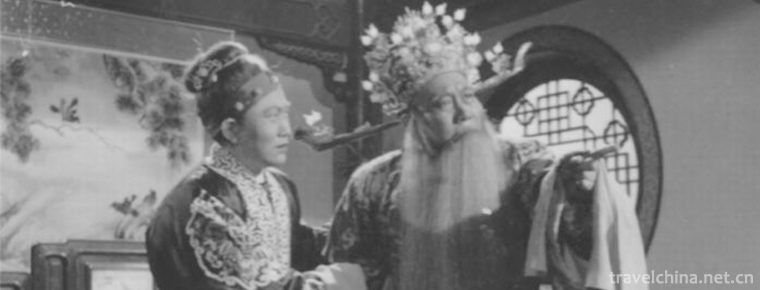
-
Tiantan Park
No. 1 donglijia, Tiantan, Dongcheng District, Beijing, China.
Views: 427 Time 2018-10-02 -
Guifeng Scenic AreaShangrao City Jiangxi Province
Guifeng Scenic Spot is located in the southwest of Yiyang County, Jiangxi Province, beside 320 National Highway, 311 Highway and Zhejiang-Jiangxi Railway.
Views: 143 Time 2018-12-08 -
The Temple House Bo she Hotel
Located in Chengdu, the Bosch is a luxury hotel with a unique style, which combines the beauty of traditional and modern design. The shape design is charming and energetic, reflecting the city's legen.
Views: 268 Time 2018-12-16 -
Bijiashan Scenic Area
Bijiashan Scenic Area is located in Tianqiao Town, Jinzhou City, Liaoning Province. The main scenic spots are Bijiashan Island and "Tianqiao", which are divided into five areas: island sight.
Views: 131 Time 2019-01-02 -
The Great Wall Site of Qin Dynasty in Ningxia
The site of the Great Wall of King Zhao of Qin Dynasty was built in the twenty-fifth year of King Zhaoxiang of Qin Dynasty (272 BC). It was built to defend against the invasion of the Huns in the sout.
Views: 119 Time 2019-02-07 -
Eight treasure pear pot
Babao pear can is a delicious name, belonging to Shandong cuisine. Babao pear cans are exquisitely made and beautifully shaped, mostly for beets at banquets. If high-grade banquet, can be filled in sm.
Views: 236 Time 2019-03-26 -
Good luck treasure
Haolaibao is a kind of Chinese Mongolian folk music, singing in Mongolian. Haolaibao means "alliteration" in Mongolian, that is, the first syllabic rhyme of each line of lyrics, so it is als.
Views: 347 Time 2019-05-02 -
Lake Opera
Huzhou Tanhuang, originally known as Huzhou Tanhuang, is a traditional local opera. It is mainly popular in Huzhou, Jiaxing, Yuhang and Linan of Hangzhou, Wujiang and Yixing of Jiangsu, Guangde of Anh.
Views: 118 Time 2019-05-03 -
Lanzhou drum
Lanzhou Drum, also known as Lanzhou Drum Ci and Lanzhou Quzi, is a popular folk form in Lanzhou area and one of the ancient Chinese Quyi. Lanzhou drum is a form of music art mainly composed of sitting.
Views: 185 Time 2019-05-10 -
Legend of the Ancestors of the Loba Nationality
The legend of the ancestors of the Loba nationality is an organic part of the life of the Loba people, a mirror of the Loba society and a way of existence of the folk life of the Loba people..
Views: 101 Time 2019-05-15 -
Fishing Song
Fishing songs are a kind of Chinese folk songs sung by fishermen in coastal areas of China and lakes and harbours. If popular in Shanwei City, Guangdong Province, collectively known as Shanwei Fishing.
Views: 172 Time 2019-07-14 -
Sichuan University of Arts and Science
Sichuan Academy of Arts and Sciences, located in Dazhou City, Eastern Sichuan Province, has a history of running higher education which can be traced back to Longshan Academy in late Qing Dynasty, whi.
Views: 145 Time 2019-08-31
